Showing Spotlights 1553 - 1560 of 2785 in category All (newest first):
 Curcumin is the star bioactive component responsible for turmeric's antioxidant, anti-inflammatory and anticancer properties. Recently, it has emerged as one of the most potent chemo-preventive and chemotherapeutic agents. Consequently, there has been a steep rise in the number of research publications and patents starting from the year 2000 onwards. This article presents the findings of a literatre survey and patent analysis on nano-enabled curcumin. There is an upward trend in patenting and publishing activities, which is especially noteworthy from 2007 onwards. One intriguing fact is that the patenting activity is showing a dominating trend in comparison with the scientific research activity suggesting the growing commercial importance of nano-enabled curcumin.
Curcumin is the star bioactive component responsible for turmeric's antioxidant, anti-inflammatory and anticancer properties. Recently, it has emerged as one of the most potent chemo-preventive and chemotherapeutic agents. Consequently, there has been a steep rise in the number of research publications and patents starting from the year 2000 onwards. This article presents the findings of a literatre survey and patent analysis on nano-enabled curcumin. There is an upward trend in patenting and publishing activities, which is especially noteworthy from 2007 onwards. One intriguing fact is that the patenting activity is showing a dominating trend in comparison with the scientific research activity suggesting the growing commercial importance of nano-enabled curcumin.
Dec 22nd, 2011
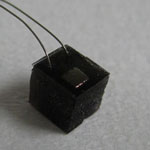 Implantable devices like pace makers or neurostimulators are powered by lithium batteries whose service life is as low as 10 years. Hence, many patients must undergo a major surgery to check the battery performance and replace the batteries as necessary. A team in Japan has now reported an interesting strategy that would keep using batteries but provides a mechanism for remotely recharging them from outside the body by converting laser light into thermal energy and subsequently to electricity. The main purpose of this study was to show that it is possible to remotely control electrical energy generation by laser light that can be transmitted through living tissue in order to target various bionic applications implanted in the body.
Implantable devices like pace makers or neurostimulators are powered by lithium batteries whose service life is as low as 10 years. Hence, many patients must undergo a major surgery to check the battery performance and replace the batteries as necessary. A team in Japan has now reported an interesting strategy that would keep using batteries but provides a mechanism for remotely recharging them from outside the body by converting laser light into thermal energy and subsequently to electricity. The main purpose of this study was to show that it is possible to remotely control electrical energy generation by laser light that can be transmitted through living tissue in order to target various bionic applications implanted in the body.
Dec 20th, 2011
 Block copolymer lithography is a cost-effective, parallel, and scalable nanolithography for the densely packed periodic arrays of nanoscale features, whose typical dimension scale is beyond the resolution limit of conventional photolithography. So far, it has been impossible to utilize block copolymer lithography on low surface energy materials such as Teflon, graphene or gold, where block copolymer thin film generally de-wets. To address this technological challenge, researchers in South Korea introduced block copolymer lithography that employs polydopamine coating - inspired by the adhesive proteins secreted by mussels - as a surface pretreatment for universal wettability generally applicable to arbitrary surfaces.
Block copolymer lithography is a cost-effective, parallel, and scalable nanolithography for the densely packed periodic arrays of nanoscale features, whose typical dimension scale is beyond the resolution limit of conventional photolithography. So far, it has been impossible to utilize block copolymer lithography on low surface energy materials such as Teflon, graphene or gold, where block copolymer thin film generally de-wets. To address this technological challenge, researchers in South Korea introduced block copolymer lithography that employs polydopamine coating - inspired by the adhesive proteins secreted by mussels - as a surface pretreatment for universal wettability generally applicable to arbitrary surfaces.
Dec 15th, 2011
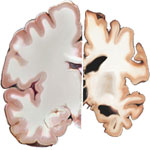 Alzheimer's disease is among the most common brain disorders affecting the elderly population the world over, and is projected to become a major health problem with grave socio-economic implications in the coming decades. The total number of people afflicted by Alzheimer's disease (AD) worldwide today is about 15 million people, a number expected to grow by four times by 2050. This review looks at some of the nanotechnology-enabled approaches that are being developed for early detection and accurate diagnosis of Alzheimer's, its therapeutic treatment, and prevention. These potential solutions offered by nanotechnology exemplify the growing significance that it holds for dealing with brain ailments in general.
Alzheimer's disease is among the most common brain disorders affecting the elderly population the world over, and is projected to become a major health problem with grave socio-economic implications in the coming decades. The total number of people afflicted by Alzheimer's disease (AD) worldwide today is about 15 million people, a number expected to grow by four times by 2050. This review looks at some of the nanotechnology-enabled approaches that are being developed for early detection and accurate diagnosis of Alzheimer's, its therapeutic treatment, and prevention. These potential solutions offered by nanotechnology exemplify the growing significance that it holds for dealing with brain ailments in general.
Dec 13th, 2011
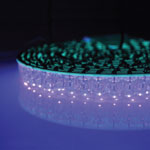 Currently, the primary tool for defining patterns at the micro- and nanometer scale is the mask aligner. Even where soft lithography methods are used, mask aligners are still often required to fabricate the masters. A mask aligner is a machine that is bulky in size and weight and is limited in the area that it can pattern in a single step. Also, a significant amount of infrastructure is needed for operation, such as high voltage power supplies and gas cooling lines. The average cost of this tool is in the six figures, which is a barrier for many labs and businesses in research and development of nanotechnologies. Researchers have now developed a compact and portable photolithography system based on a solid-state light source to remove these limiting factors and, at the same time, make available the high quality patterns that a mask aligner can produce.
Currently, the primary tool for defining patterns at the micro- and nanometer scale is the mask aligner. Even where soft lithography methods are used, mask aligners are still often required to fabricate the masters. A mask aligner is a machine that is bulky in size and weight and is limited in the area that it can pattern in a single step. Also, a significant amount of infrastructure is needed for operation, such as high voltage power supplies and gas cooling lines. The average cost of this tool is in the six figures, which is a barrier for many labs and businesses in research and development of nanotechnologies. Researchers have now developed a compact and portable photolithography system based on a solid-state light source to remove these limiting factors and, at the same time, make available the high quality patterns that a mask aligner can produce.
Dec 12th, 2011
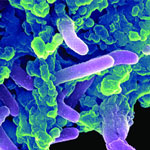 Microbiology relates to nanoscience at a number of levels. Many bacterial entities are nano-machines in nature, including molecular motors like flagella and pili. Bacteria also form biofilms by the process of self-assembly. The formation of aerial hyphae by bacteria and fungi is also directed by the controlled and ordered assembly of building blocks. Also, the formation of virus capsids is a classical process of molecular recognition and self-assembly at the nanoscale. Nanoscience does have an impact on several areas of microbiology. It allows for the study and visualization at the molecular-assembly levels of a process. It facilitates identification of molecular recognition and self-assembly motifs as well as the assessment of these processes.
Microbiology relates to nanoscience at a number of levels. Many bacterial entities are nano-machines in nature, including molecular motors like flagella and pili. Bacteria also form biofilms by the process of self-assembly. The formation of aerial hyphae by bacteria and fungi is also directed by the controlled and ordered assembly of building blocks. Also, the formation of virus capsids is a classical process of molecular recognition and self-assembly at the nanoscale. Nanoscience does have an impact on several areas of microbiology. It allows for the study and visualization at the molecular-assembly levels of a process. It facilitates identification of molecular recognition and self-assembly motifs as well as the assessment of these processes.
Dec 9th, 2011
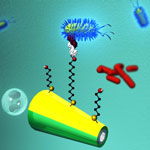 Early detection of food borne pathogenic bacteria is critical to prevent disease outbreaks and preserve public health. This has led to urgent demands to develop highly efficient strategies for isolating and detecting this microorganism in connection to food safety, medical diagnostics, water quality, and counter-terrorism. Conventional techniques to detect E. coli and other pathogenic bacteria are time-consuming, labor-intensive, and inadequate as they lack the ability to detect bacteria in real time. Thus, there is an urgent need for alternative platforms for the rapid, sensitive, reliable and simple isolation and detection pathogens. Taking a novel approach to isolating pathogenic bacteria from complex clinical, environmental and food samples, researchers have developed a nanomotor strategy that involves the movement of lectin-functionalized microengines. Receptor-functionalized nanoswimmers offer direct and rapid target isolation from raw biological samples without preparatory and washing steps.
Early detection of food borne pathogenic bacteria is critical to prevent disease outbreaks and preserve public health. This has led to urgent demands to develop highly efficient strategies for isolating and detecting this microorganism in connection to food safety, medical diagnostics, water quality, and counter-terrorism. Conventional techniques to detect E. coli and other pathogenic bacteria are time-consuming, labor-intensive, and inadequate as they lack the ability to detect bacteria in real time. Thus, there is an urgent need for alternative platforms for the rapid, sensitive, reliable and simple isolation and detection pathogens. Taking a novel approach to isolating pathogenic bacteria from complex clinical, environmental and food samples, researchers have developed a nanomotor strategy that involves the movement of lectin-functionalized microengines. Receptor-functionalized nanoswimmers offer direct and rapid target isolation from raw biological samples without preparatory and washing steps.
Dec 8th, 2011
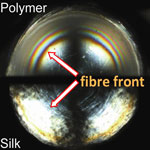 Researchers have, for the first time, compared the energetic cost of silk and synthetic polymer fiber formation and demonstrated that, if we can learn how to spin like the spider, we should be able to cut the energy costs for polymer fiber processing by 90%, leaving alone the heat treatment requirements. The two routes of polymer fiber-spinning - one developed by nature and the other developed by man - show striking similarities: both start with liquid feed-stocks sharing comparable flow properties; in both cases the 'melts' are extruded through convergent dye designs; and for both 'spinning' results in highly ordered semicrystalline fibrous structures. In other words, analogous to the industrial melt spinning of a synthetic polymer, in the natural spinning of a silk the molecules (proteins) align (refold), nucleate (denature) and crystallize (aggregate).
Researchers have, for the first time, compared the energetic cost of silk and synthetic polymer fiber formation and demonstrated that, if we can learn how to spin like the spider, we should be able to cut the energy costs for polymer fiber processing by 90%, leaving alone the heat treatment requirements. The two routes of polymer fiber-spinning - one developed by nature and the other developed by man - show striking similarities: both start with liquid feed-stocks sharing comparable flow properties; in both cases the 'melts' are extruded through convergent dye designs; and for both 'spinning' results in highly ordered semicrystalline fibrous structures. In other words, analogous to the industrial melt spinning of a synthetic polymer, in the natural spinning of a silk the molecules (proteins) align (refold), nucleate (denature) and crystallize (aggregate).
Dec 7th, 2011
 Curcumin is the star bioactive component responsible for turmeric's antioxidant, anti-inflammatory and anticancer properties. Recently, it has emerged as one of the most potent chemo-preventive and chemotherapeutic agents. Consequently, there has been a steep rise in the number of research publications and patents starting from the year 2000 onwards. This article presents the findings of a literatre survey and patent analysis on nano-enabled curcumin. There is an upward trend in patenting and publishing activities, which is especially noteworthy from 2007 onwards. One intriguing fact is that the patenting activity is showing a dominating trend in comparison with the scientific research activity suggesting the growing commercial importance of nano-enabled curcumin.
Curcumin is the star bioactive component responsible for turmeric's antioxidant, anti-inflammatory and anticancer properties. Recently, it has emerged as one of the most potent chemo-preventive and chemotherapeutic agents. Consequently, there has been a steep rise in the number of research publications and patents starting from the year 2000 onwards. This article presents the findings of a literatre survey and patent analysis on nano-enabled curcumin. There is an upward trend in patenting and publishing activities, which is especially noteworthy from 2007 onwards. One intriguing fact is that the patenting activity is showing a dominating trend in comparison with the scientific research activity suggesting the growing commercial importance of nano-enabled curcumin.
 Subscribe to our Nanotechnology Spotlight feed
Subscribe to our Nanotechnology Spotlight feed





